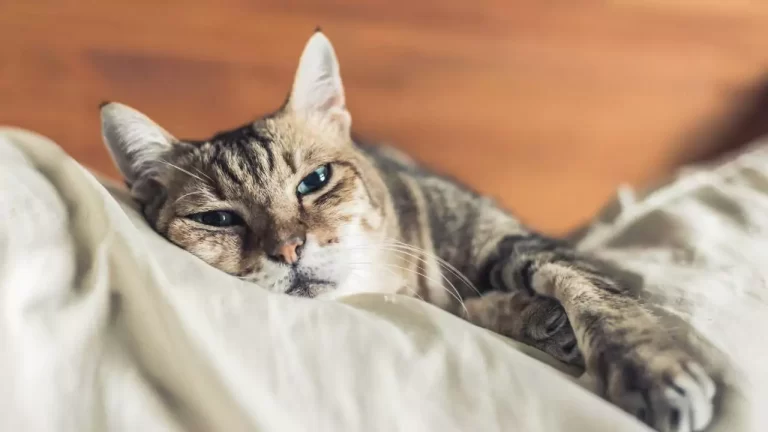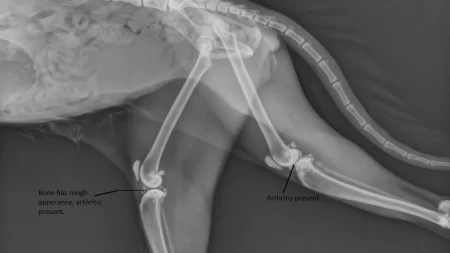Cats are considered “full-grown” when they reach 18 months, equivalent to a 21-year-old human, according to PetMD. However, some breeds may not reach full size until they are 2 years old. During the 12 to 18-month span, a cat can continue to grow in size. While many cats stop growing around 12 months, not all are done growing at this age.
Understanding a Cat’s Growth Stages
Cats go through different stages of growth throughout their lives, each with its own characteristics and needs. Here are the main stages of a cat’s life cycle:
Kitten Stage
This is the stage where cats grow the fastest, from birth to about six months of age. Kittens need a lot of care and attention from their mother and their human companions, as they learn how to walk, eat, play, and socialize. Kittens also need a high-quality diet that provides them with enough calories and nutrients for their rapid growth. By the end of this stage, kittens should have their adult teeth and reach about 50% of their adult weight.
Junior Stage
This is the stage where cats reach their sexual maturity and become adolescents, from six months to two years of age. Junior cats are very active and curious and may show some rebellious behavior. They also need a lot of stimulation and exercise to keep them healthy and happy. Junior cats should be spayed or neutered to prevent unwanted pregnancies and reduce the risk of certain diseases. By the end of this stage, most cats are fully grown, but some breeds may continue to grow until they are four years old.
Prime Stage
This is the stage where cats are in their prime of life, from three to six years of age. Prime cats are adults that have reached their physical and mental maturity. They are confident and stable and have developed their own personality and preferences. Prime cats need a balanced diet that matches their activity level and prevents obesity. They also need regular veterinary check-ups and vaccinations to maintain their health and well-being.
Mature Stage
This is the stage where cats start to show some signs of aging, from seven to ten years of age. Mature cats may slow down a bit and become more relaxed and calm. They may also experience some changes in their coat, eyes, teeth, and joints. Mature cats need a diet that is lower in calories and higher in fiber and protein, to support their aging organs and muscles. They also need more frequent veterinary visits and screenings to detect any potential health problems early.
Senior Stage
This is the stage where cats are considered seniors, from 11 to 14 years of age. Senior cats may have some noticeable changes in their appearance and behavior, such as graying fur, weight loss, reduced mobility, and decreased appetite. They may also develop some age-related conditions, such as arthritis, diabetes, kidney disease, or dementia. Senior cats need a diet that is specially formulated for their needs, with more moisture, antioxidants, and omega-3 fatty acids. They also need more care and attention from their owners, and more frequent veterinary exams and tests to monitor their health and quality of life.
Factors That Affect a Cat’s Growth
As we mentioned before, not all cats grow at the same rate or reach the same size. There are some factors that can influence how big your cat will get, such as:
- Breed and genetics: A cat’s breed and genetics are the main factors that determine their growth potential. Some breeds, such as Maine Coons, Ragdolls, or Norwegian Forest Cats, are naturally larger and heavier than others, such as Siamese, Abyssinians, or Singapuras. Some breeds may also have specific growth patterns, such as the Munchkin, which has shorter legs due to a genetic mutation. If you know your cat’s breed or ancestry, you can have a better idea of how big they will get and when they will stop growing.
- Nutrition: A cat’s nutrition is another important factor that affects their growth. A cat that receives a proper diet that meets their nutritional needs will grow healthy and strong, while a cat that is underfed or overfed may have stunted or excessive growth. A kitten needs a diet that is high in calories, protein, fat, and calcium, to support their rapid growth and development. An adult cat needs a diet that is balanced and moderate, to maintain their optimal weight and health. A senior cat needs a diet that is lower in calories and higher in fiber and protein, to support their aging organs and muscles. A cat’s diet should also be adjusted according to their activity level, health condition, and lifestyle.
- Environment and lifestyle: A cat’s environment and lifestyle can also have an impact on their growth. A cat that lives in a safe, comfortable, and stimulating environment will grow more happily and confidently, while a cat that lives in a stressful, harsh, or boring environment may grow more slowly or poorly. A cat that has a lot of exercise and playtime will grow more fit and muscular, while a cat that is sedentary and lazy may grow more fat and flabby. A cat that is exposed to different people, animals, and situations will grow more sociable and adaptable, while a cat that is isolated or fearful may grow more timid and anxious.
How to Monitor a Cat’s Growth?
Monitoring your cat’s growth is important to ensure that they are developing properly and healthily. Here are some tips on how to monitor your cat’s growth:
- Regular veterinarian check-ups: The best way to monitor your cat’s growth is to take them to the veterinarian regularly, especially during their first year of life. Your veterinarian will weigh your cat, measure their body condition score, and examine their overall health and development. Your veterinarian will also advise you on the proper diet, vaccination, and spaying or neutering for your cat, depending on their age, breed, and lifestyle. Your veterinarian will also alert you to any potential health problems or abnormalities that may affect your cat’s growth.
- Proper nutrition and exercise: Another way to monitor your cat’s growth is to provide them with a proper nutrition and exercise regimen, according to their age, breed, and lifestyle. You should feed your cat a high-quality diet that meets their nutritional needs and prevents obesity or malnutrition. You should also provide your cat with enough exercise and playtime to keep them fit and happy. You can use a cat food calculator to determine how much food your cat needs per day, and a cat toy or a cat tree to stimulate their physical and mental activity.
- Signs of abnormal growth or development: Finally, you should monitor your cat’s growth by looking for any signs of abnormal growth or development, such as stunted or excessive growth, weight loss or gain, reduced mobility or appetite, or changes in appearance or behavior. These signs may indicate that your cat has a health problem or a genetic disorder that affects their growth. If you notice any of these signs, you should consult your veterinarian as soon as possible, and follow their recommendations for treatment and care.







